Let's talk about: Dinosaurs
Subscribe here (it's free!)
Dinosaurs.
Intro - Archosaurs
We begin the journey around 250 million years ago, at the end of the Permian era, marked by the largest mass extinction in Earth’s history. The Permian-Triassic extinction event was catastrophic, claiming around 90 percent of marine life and 70 percent of life on land. Synapsids, animals that dominated the Permian landscape, were all but wiped out. A few trickled through, biding their time to regain their kingdom in a later era, but for now what was important was that life had entered the Triassic era - albeit barely.
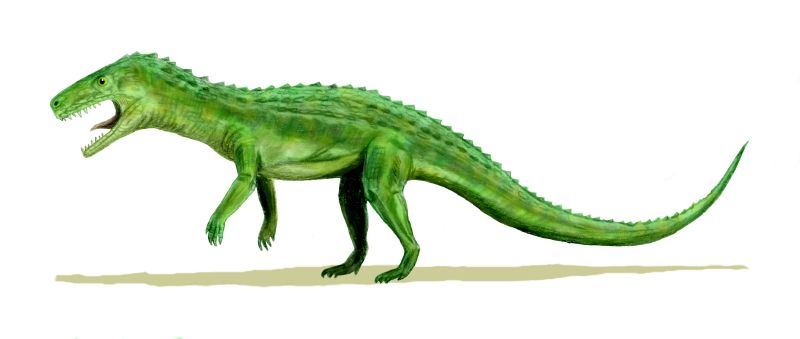
Euparkeria, an early archosauriform (not an archosaur)
Among the lucky survivors, were a group of animals known as the archosaurs. The archosaurs were diapsids, meaning they had two holes in their skull behind each eye socket in contrast to the single hole that identified a synapsid skull. It would take life a few million years to fully recover, but when it did, the archosaurs were the clear heirs to the synapsid throne.

This animal has one hole behind the eye socket
The archosaurs were the common ancestors of two sub-groups: Pseudosuchia and Avemetatarsalia. The names will make sense later; for now, let’s just note that descendants of both groups live with us today. As you may have guessed from the title of the post, we will soon be talking about dinosaurs and we shall stick with dinosaurs till the very end. On the way, we shall pick and examine some dinosaurs and see how they evolved over 200 million years.
We shall set aside Pseudosuchia for this post, simply because we won’t find any dinosaurs heading down that road, and instead focus on Avemetatarsalia, which contains the Pterosaurs and Dinosauromorpha. Despite what you may have read, the Pterosaurs were NOT dinosaurs. The Pterosaurs were flying winged reptiles that lived with dinosaurs, so they were more like dinosaur buddies. At this point, a brief disclaimer: this whole field of study is being actively researched, and stunning (depends on how easily you get stunned) new revelations are being made every few years. As a result, many of the relationships between these prehistoric animals are frequently re-assigned. I have tried to mention only what scientists know is pretty solid and backed by good (more than half a fossil) evidence.
The other sub-group of Avemetatarsalia, the Dinosauromorpha consists of a number of different subgroups, some identified by only a partial skeleton. This is only going to keep us from the meat of this post, so all I will do is leave a picture of an animal from one of these groups and rush on.
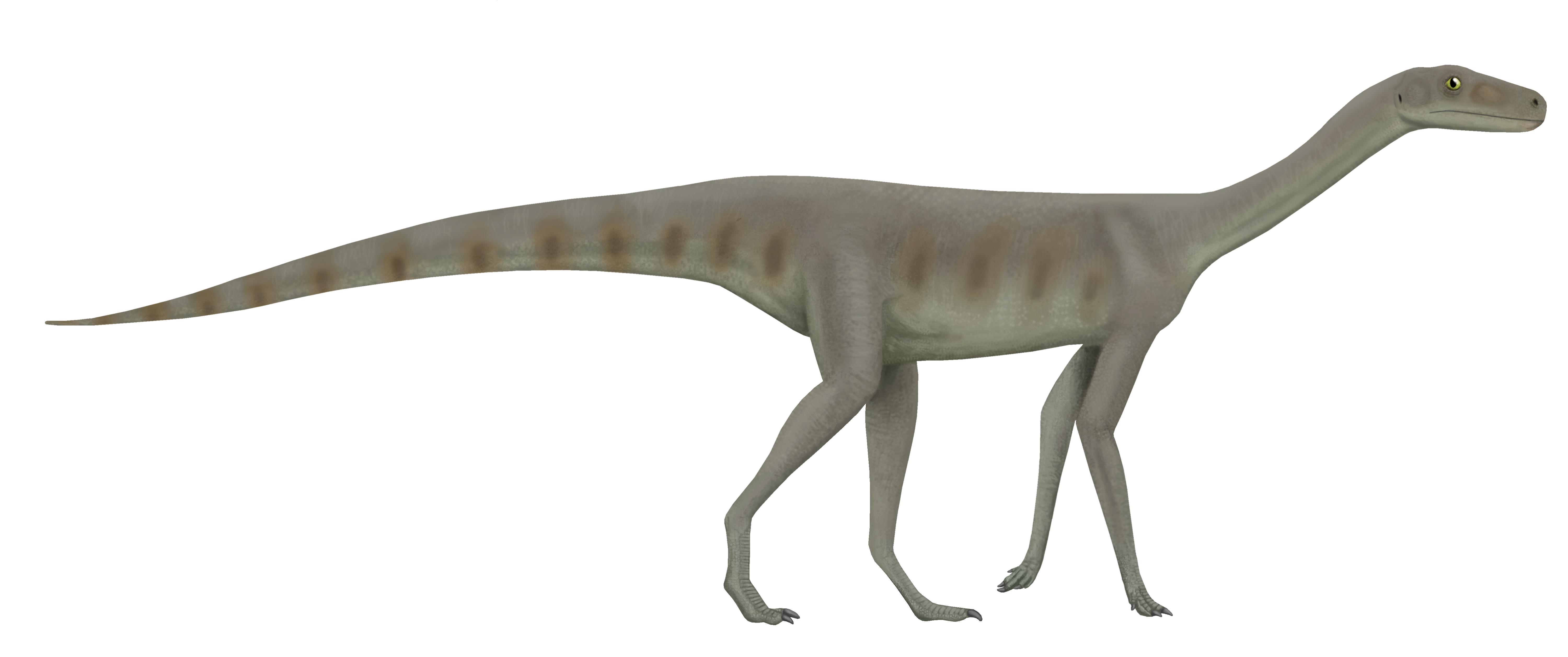
Asilisaurus, a Silesaurid
Another extinction event marked the end of the Triassic, wiping out many archosaurs and paving the way for the Jurassic era and the Earth’s new rulers - the Dinosaurs.
Dinosauria
Simply put, all animals in Dinosauria are dinosaurs. All animals outside Dinosauria are not.
Dinosaurs are classified based on their hips into belly-dancers and non-belly-dancers. I’m kidding, but only about the belly-dancer bit. Ornithiscia (bird-hipped dinosaurs) consists of a number of well-known dinosaurs - Triceratops, Stegosaurus, Pachycephalosaurus and various Ankylosaurs and Hadrosaurs. You may (or should) know them from the popular “The Land Before Time” series. Seriously, if you haven’t seen it yet, (read this post first and then) give it a watch. While they are fascinating creatures in their own right, they play no further role in our story as they have all gone extinct.
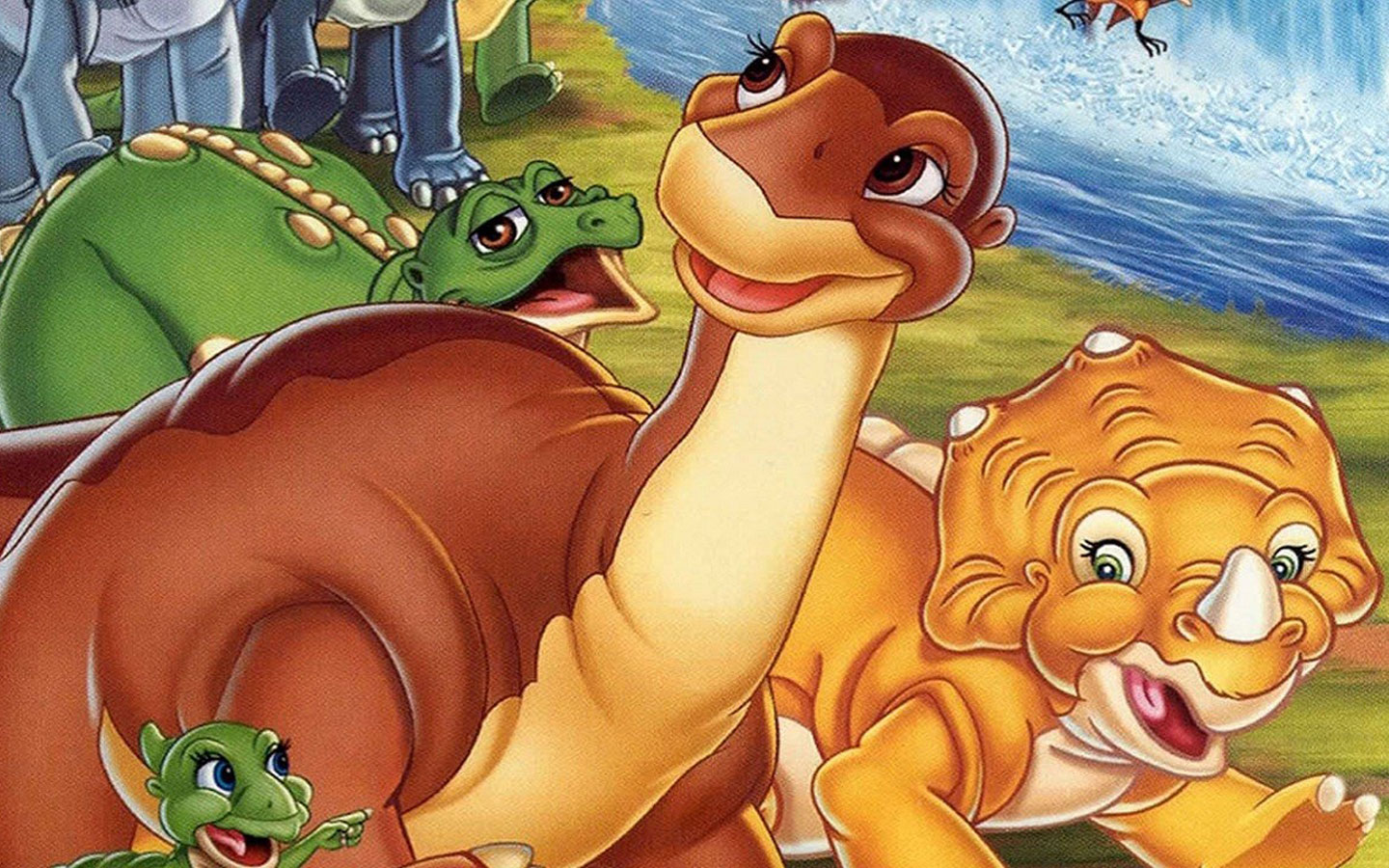
Dinosaurs in The Land Before Time
We shall instead focus on the other branch - Saurischia (lizard-hipped dinosaurs). Saurischia consists of two groups, Sauropodomorpha and Theropoda. Sauropodomorpha contains the Sauropods - the largest land animals to have ever lived. The dinosaurs you’re picturing when you imagine those tall trees and long mega-giraffe necks? Those are all Sauropods. These animals were very, very large - far larger than the largest mammals that have ever existed. Unfortunately for us, they are also very, very dead. Like the Ornithischians, the Sauropods flourished during the Jurassic and Cretaceous eras before a meteor hit the Earth and wiped out all dinosaurs. Wait, did I say all dinosaurs? Sorry, that’s not entirely correct - a few dinosaurs did make it past the Cretaceous extinction event and are with us today. To that end, we shall cast the Sauropods by the wayside and proceed instead with their “siblings”, the Theropods.
Theropods
Allosaur
The Theropods included many famous dinosaurs - dinosaurs so popular that they have landed more lead roles in Hollywood blockbusters than most of us. We begin with Allosaurus, the apex predator of the late Jurassic. Allosaurus was bipedal and likely covered in scales. It is likely that they ate Ornithischians and some sauropods for lunch. To non-dinosaur fans, they look similar to a T-Rex, which is what most large Theropods look like.
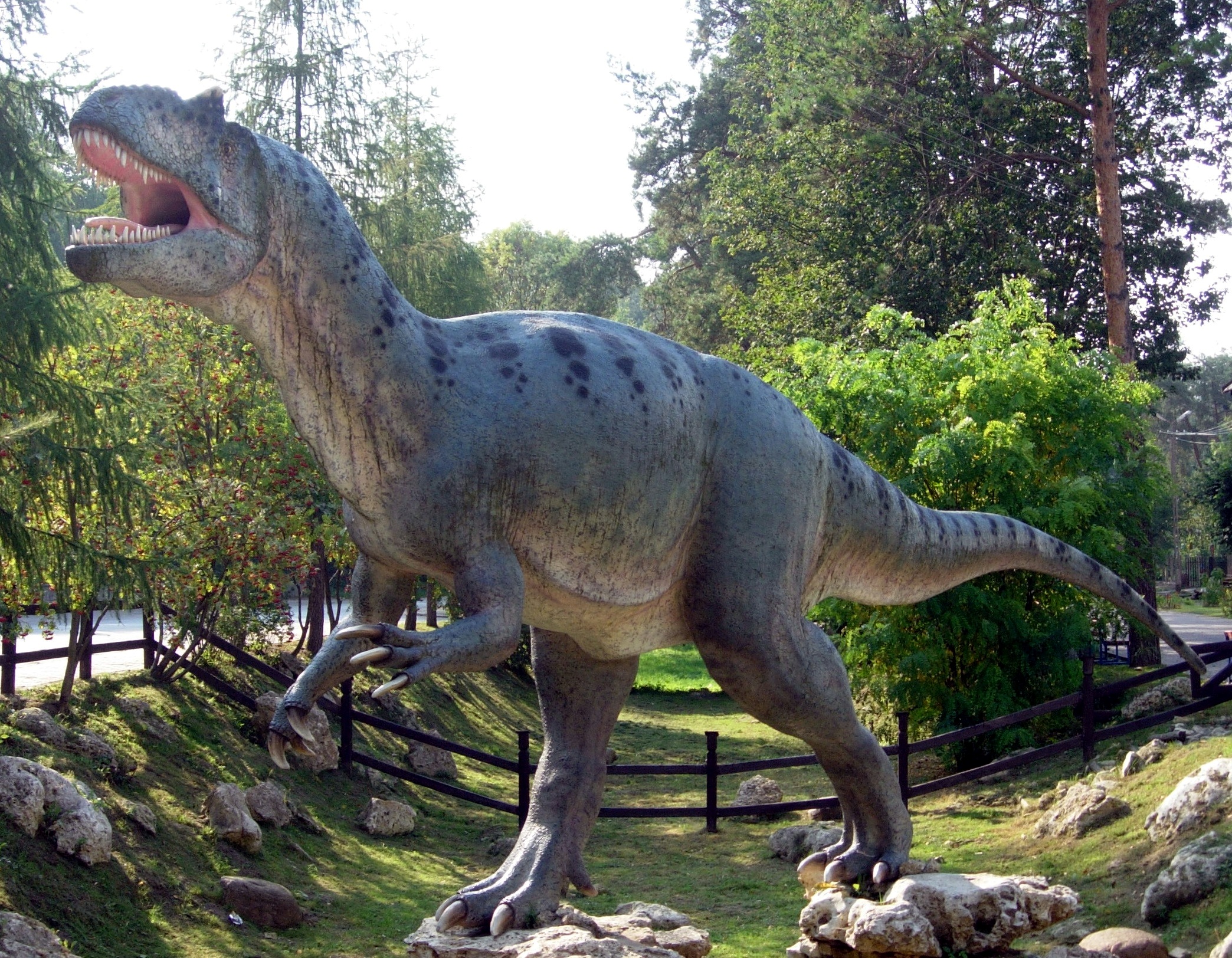
Allosaurus
T-Rex
“To a non-dinosaur fan” - primarily because T-Rex is way more popular than any other dinosaur and secondly, because T-Rex probably didn’t look anything like the dinosaur you’re imagining right now. Yes, the T-Rex was large, and probably scaly, but importantly, it was likely fuzzy all over. T-Rex was a Coelurusaur and, like other Coelurusaurs, had feathers (that would slowly replace scales in Theropods over millions of years). Wait, they had feathers? Are you telling me that T-Rex could fly? No, no, now that would be insane! The feathers probably served as insulation or, since they came in colors, may have been part of a display to attract mates. We have make-up and fashion while T-Rex had feathers - life in a simpler time. Thinking of which, I’m not sure that with an appearance like that they’d have landed the lead role in the Jurassic Park movies (and this is ignoring the fact that they lived towards the end of the Cretaceous and not the Jurassic… up your game, Spielberg).

T-Rex. Not so scary anymore, eh?
Velociraptor
Speaking of Jurassic Park, we must get started with the other stars of the movie - the velociraptors. If you thought that T-Rex was misrepresented, let me tell you that you could probably fight off a velociraptor. Primarily because velociraptors were pretty small - they would come up to your knee. And they had feathers - more feathers than T-Rex; feathers that covered their whole body, even their “wings”. Could they fly? Probably not - for at 15kg, for their size they were heavy.
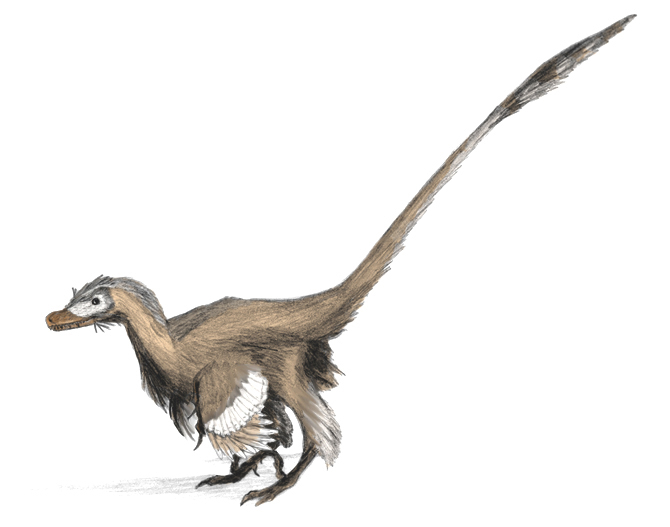
Velociraptor
Flight?
Talking about flight, there indeed were some dinosaurs from the Cretaceous that could fly. Microraptor, a Dromaeosaur, likely could fly - it had flight feathers on all four limbs! There are suggestions, however, that Microraptor probably only used its “wings” for gliding. Spare a second to amuse yourself over the irony - four winged limbs and flightless! An appropriate chuckle later, we are ready to resume.
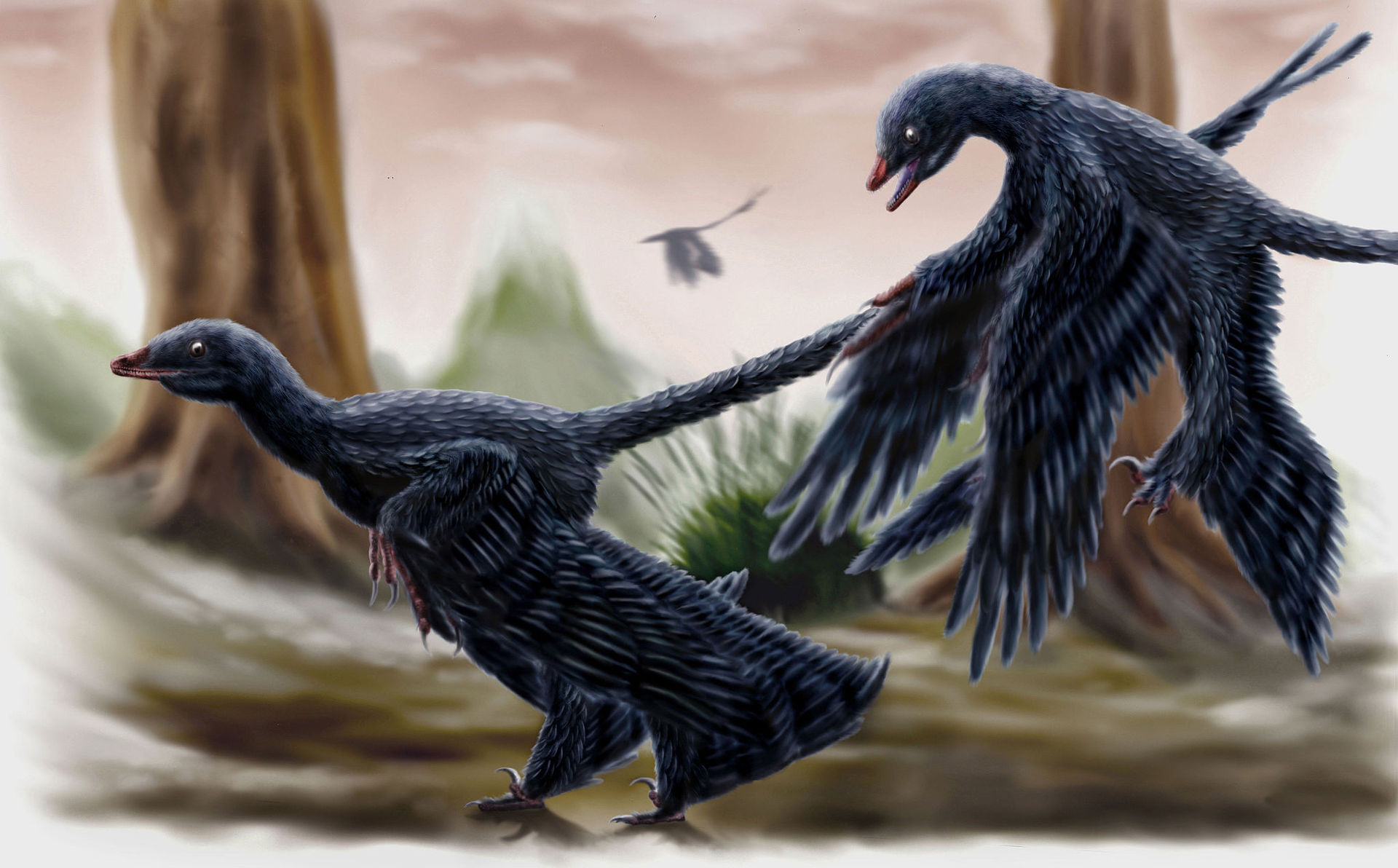
Microraptor - a dinosaur
A little further down the evolutionary tree, we meet another split in the group Eumaniraptora - where we leave behind our beloved Velociraptors (and Deinonychus) - to move forward with Avialae. Avialae contains the famed Archaeopteryx, notable for how similar their feathers were to that of modern birds. It could also fly, although not as well as modern birds. However, Archaeopteryx was unlike modern birds in that they had long tails (greater than 10 vertebrae) and teeth.
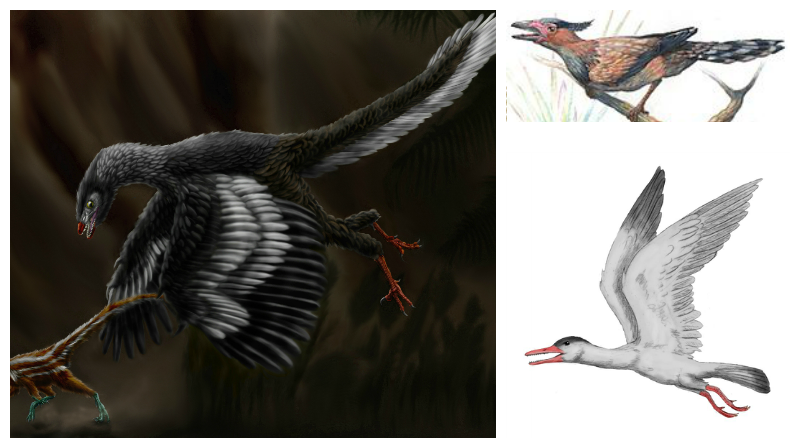
Archeopteryx (left), Sinornis (top) and Ichthyornis (bottom)
Continuing our journey down the tree of evolution, we meet Sinornis, an enantiornithine (opposite bird). While it had teeth, Sinornis could fly and perch! Ichthyornis, a little further down, had no teeth at the tip of its “beak” (although it did have teeth further back) and more importantly - it was capable of flapping flight. It could fly! Could this mean…? Yes, a few steps ahead in the tree and we meet “Aves” - or as most of us know them, birds.
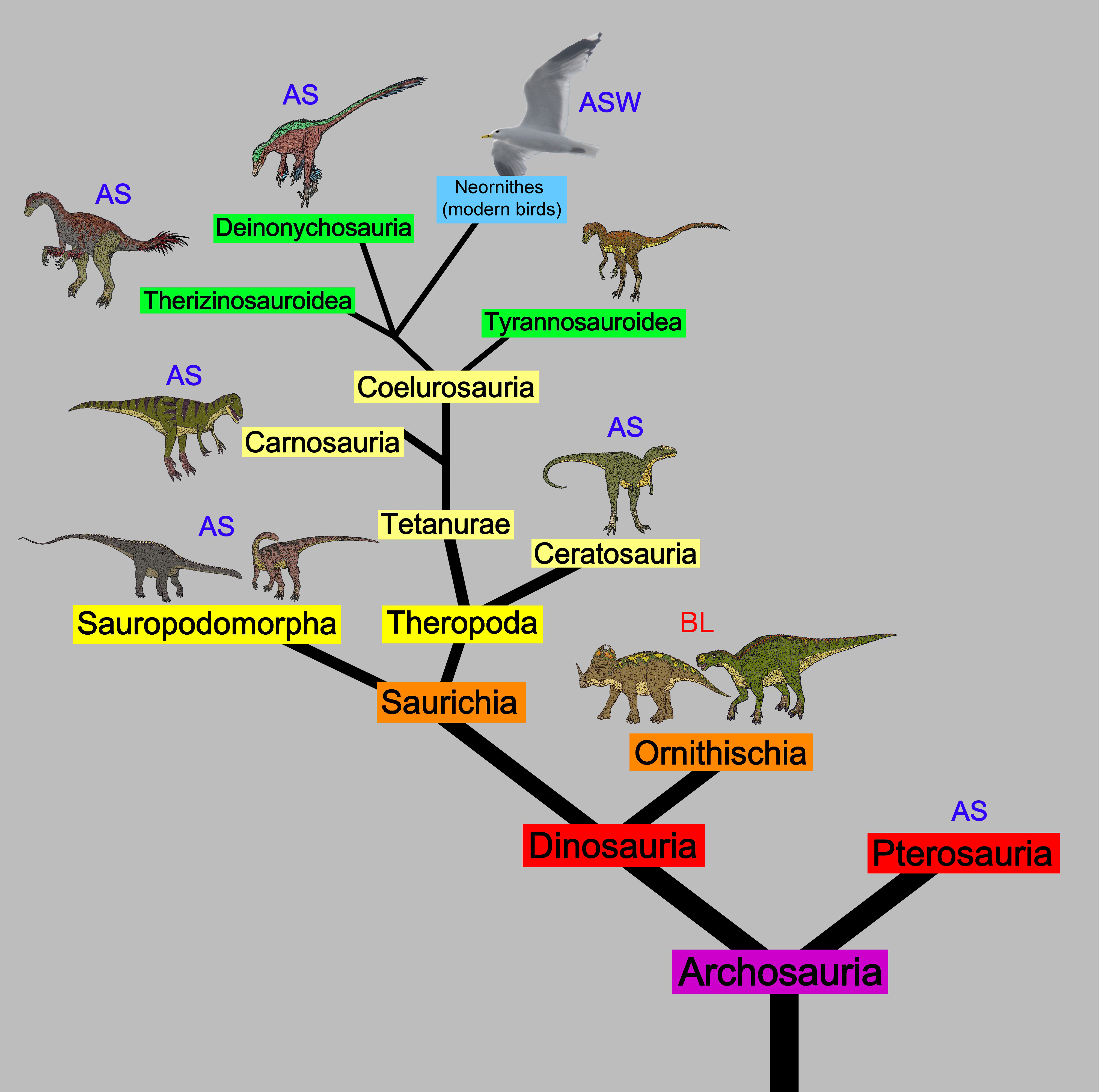
The phylogenetic tree we covered (more or less). We went from the bottom-up and hit most of these groups.
Birds (Epilogue)
I found it interesting to note the small mutations over generations that built on each other to give us the animals we see around us today. As they are in the group Dinosauria, birds are dinosaurs. In fact, they are the only living dinosaurs today. All other dinosaurs went extinct during the meteor impact that ended the Cretaceous era. There is reason to believe that true birds (in Aves) lived before the meteor impact and lived through it. Of all the vertebrates, birds have hte largest number of different species.
Lastly, I’d like to explore the question - what makes a bird a bird? Now, at the end of our journey, the line between non-bird dinosaurs and birds may seem blurry - or non-existent. There have been flying dinosaurs, beaked dinosaurs and many feathered dinosaurs. And some with all these features! So, what does make a bird a bird? There are a number of very specific features, and I shall try to summarize a few of these: a beak that mixes with the nose, a large eye socket, a lack of proper teeth, a big brain and some specific skull features. This is still an active and widely debated area of research, however, and may change depending on how you define “birds”. And with that, we close this chapter.

Another tree; shows the evolution of feathers (note the slightly different interpretation of Aves)
Appendix
*Avemetatarsalia = bird-foot. Pseudosuchia = false-crocodile. Left those out intentionally. Velociraptor = quick-thief. Tyrannosaurus = tyrant-lizard.
*By virtue of belonging to Archosauria, birds are also archosaurs.
*If you’re wondering, the other archosaurs alive today are the crocodilians (alligators, crocodiles and such). Being the only archosaurs living today, they are also the closest relatives of each other’s.
*How birds were the only dinosaurs that survived is a question for another day.
*I may have used “group” instead of “Order”/“Family”/“Clade”/“Genus” - this is only to make for easier reading.